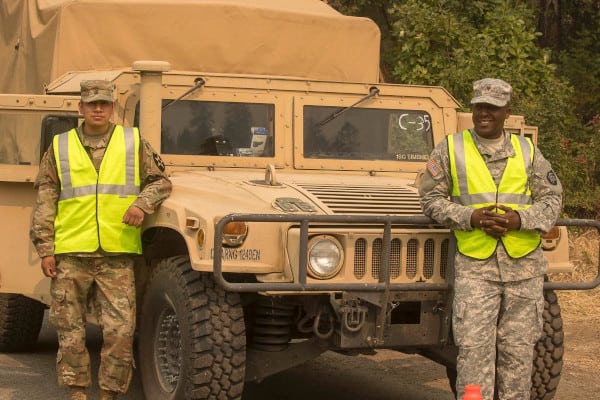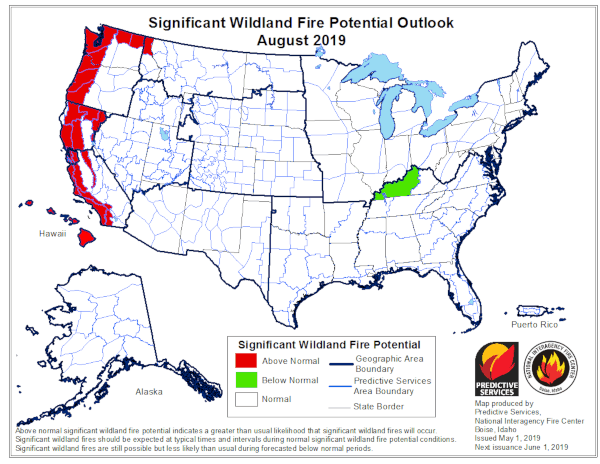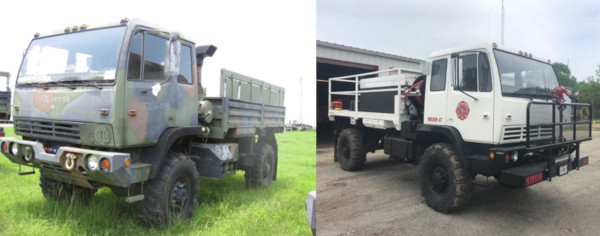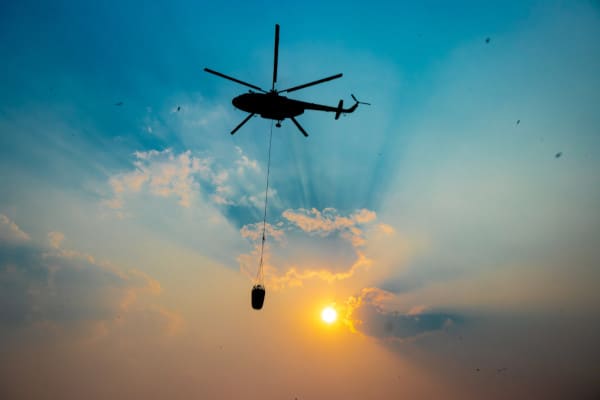Bicycles, virtual reality, and bombs add new chapters to the military’s firefighting history
In this edition of QRFS’s Fire News Round-Up, we look at intersections between the United States military and the world of firefighting. From innovations in firefighting training to domestic wildfire deployments, here’s the news worth knowing:
Soldiers are no stranger to wildfire
Against all enemies, foreign and domestic (including fire). Members of the U.S. armed services have been called to defend public lands since the late 19th century. Yellowstone, the world’s first national park, was first protected by the U.S. Army. But even after the establishment of the U.S. Forest Service, military partnerships have remained a key source of protection for America’s wildlands. Today, state and federal agencies, along with state governors, can request airplanes to survey fires, air tankers and helicopters to fight them, and the aid of military firefighters.

Washington’s guardsmen get a jump on wildfire season. Since 2014, more than 4,000 members of the Washington National Guard have supported firefighting efforts in Washington State. Earlier this month, the National Interagency Fire Center issued a report predicting above-average fire activity in western and northern Washington during the 2019 fire season. The Washington National Guard has already teamed up with fire professionals to prepare.

Those guardsmen do so with the benefit of new legislation: in a 94-0 vote, Washington’s House of Representatives increased the allowable pay of National Guard members deployed to fight wildfires. Prior to House Bill 1137, the amount that lower-level National Guardsmen received for wildland firefighting was one and a half times the federal minimum wage. But that amount is less than the state’s current minimum wage of $12 an hour—a problem the new legislation corrects.
Wildfire training gets real. While some members of the National Guard have started training, others have already started fighting wildfires. Black Hawk helicopters from the Colorado Army National Guard interrupted their wildfire bucket training exercise and traveled to Centennial—a suburb of Denver—to fight the emerging Black Bridge Fire. While Colorado’s overall wildfire risk has declined significantly this year thanks to high snowpack, the state anticipates roughly 600 fires across 100,000 acres this year alone.

The dangers of duds. A wildfire near Delta Junction, Alaska has burned since April 30th—and the surprisingly large wildland fire has already taken almost 7,000 acres of military land. It’s a particularly large and early fire with one major complication: an unknown quantity of explosive materials (including mortars and bombs) on the ground. Since the 1940s, the Army and Air Force have used the ground at Oregon Lakes for training missions. The unexploded ordnance makes it too dangerous to deploy firefighters or low-flying aircraft to the scene.

Civilian fire departments welcome old military gear but the FDNY isn’t making room for a relatively young veteran
Too old for public service? After four combat tours in Afghanistan and Iraq, Navy Special Operations Chief Shaun Donovan set his sights on service in the Fire Department of New York (FDNY). After paying out-of-pocket to travel to New York—and scoring within the top 1% of nearly 44,000 applicants—Donovan learned that he was just over six months too old when the process began. The denial comes as a disappointment to the veteran, who wasn’t granted leave for the prior year’s exam. While FDNY grants military veterans an extra six years to begin their application process, their rules impose a strict age cut-off age of 35 years old. Since Donovan’s rejection, he has been offered a job with several other fire departments across the country, but he intends to appeal and pursue a spot with the FDNY.
Military gear trickles down to fire departments. Kirvin isn’t Texas’s smallest town, but with a population of less than 200 and land totaling less than half a square mile in size, it’d be an easy stop to miss on a trip from Dallas to Houston. Still, Kirvin is one of many places to benefit from the Department of Defense’s Firefighter Property Program, or FFP. FFP provides fire departments around the country with a variety of government equipment, including cargo vehicles, haul trucks, and tanker trucks. Kirvin re-vamped a 1997 Stewart & Stevenson truck—once intended for delivering military supplies and providing combat support—which now carries a 600-gallon water tank, a foam tank, and a remote-control firefighting turret.

Military firefighters and civilian firefighters serving military bases embrace new tactics, training
The fastest response times on two wheels. Federal firefighters serving military bases are versed in less-common and sometimes more dangerous facets of public safety. From extinguishing a variety of aircraft fires to controlling flames in military laboratories, it’s a specialized line of work that sometimes takes a physical and mental toll.
But “emergency services bike team” is a surprising—and lesser-known—specialization embraced by firefighters at Wright-Patterson Air Force Base in Greene County, Ohio. The Air Force Materiel Command recently ran an article on the AFB’s team, which plays a key role in conducting searches or delivering medical aid in crowded or rough terrain. The members of this trained and certified team carry advanced medical equipment, including automated external defibrillators, and have already saved the life of a runner who collapsed from cardiac arrest.
Training without the toxins. At Offutt Air Force Base near Omaha, Nebraska, military firefighters have started training virtually. This equipment allows them to train faster and cheaper—there’s no fuel or water needed, no rigs to load up, and no carcinogenic toxins from real fires. The scenarios they engage in are impressive in their specificity, allowing personnel to simulate fires in the kinds of military aircraft they have on base.
This novel approach to firefighter training comes from FLAIM Systems, an Australian manufacturer of fire simulation equipment. As the video below suggests, FLAIM’s mixed-reality training provides firefighters with virtual environments and hardware to match, with simulated hose pressure and heated turnout gear:
Information helps fire professionals defend people and property, in or out of uniform
Firefighting and military service are two longstanding traditions of American public service. While they’re always changing, the fundamentals of fire safety remain the same. For an authoritative, digestible look at some of the most important topics and equipment in life safety and firefighting, we invite you to browse our library of fire service topics, including:
- Fire Hose Spray Nozzles: How They Work and How to Choose One
- Single Jacket, Double Jacket, and Rubber-Coated Fire Hoses: How to Choose the Right Hose for Your Needs
- Airplane Hangar Fire Suppression Systems: An Essential Guide
- Life Safety Rope for Firefighters: The Bulwark Safety X
Got feedback on our news roundup? Call us at +1 (888) 361-6662 or email support@qrfs.com.
This blog was originally posted at blog.qrfs.com. Check us out at Facebook.com/QuickResponseFireSupply or on Twitter @QuickResponseFS.


